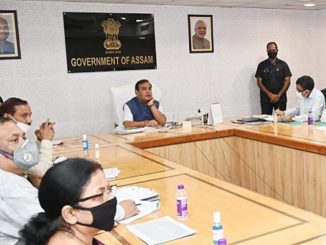Certain infectious diseases are so contagious and fatal that prevention by whatever means or methods is the only way to ward them off. Covid-19 is one such disease. This disease has made all the governments and other non-governmental organizations to declare humans to remain in doors and to follow all kinds of social distancing so as break its chain of spread. Under such scenario, it becomes very difficult for livestock owners especially dairy farmers to manage their stock efficiently. From financial point of view, it appears to be an uphill task for the farmer to decide whether to continue with the business or not, since value of animals get reduced dramatically during days of any emergency. There is an opposite trend as far as input costs are concerned. They usually skyrocket in no time. During an emergency (like Covid-19 outbreak), following points can help the livestock owners to make rational decisions about their farming activities.
1. Make all possible efforts to safeguard living and non-living things at the farm. Importance of a particular object will determine the order of preference of its safeguarding.
2. During any emergency, employees, labourers and other workers at the farm are the ones which should be taken care of first. Every effort should be made to make their stay at the farm as comfortable and safe as possible. Some of the safe measures that need to be adopted at the farm have been enlisted here under.
- All the workers should be allowed to stay at the farm itself day and night.
- Entry of outsiders at the farm should be strictly banned.
- Minor ailments in livestock may be got treated at the farm itself in consultation with the local veterinarian. Consultations should be done on-line or telephonically.
- If the ailment is serious and it warrants veterinary intervention, then, the sick animal should be got restrained properly at the gate of the farm well before the arrival of the veterinarian. This will save some crucial time for implementing the intervention, maneuver or any kind of veterinary procedure curtailing the duration of stay of veterinarian at the farm significantly.
- The veterinarian, stockman and the attendants should be allowed to disinfect their hands with a recommended sanitizer or disinfectant before and after the maneuver.
- When any kind of fodder is brought to the premises of the farm, the vehicle should be properly disinfected at the entrance itself. The driver of the vehicle may also be instructed to get his clothes changed. It will be a good idea if he is allowed to take bath before getting engaged in any other activity at the farm.
3. After safeguarding humans, the livestock comes next. In the end, buildings and farm equipments should be taken care of.
4. All the livestock farms should have properly maintained relevant records. During an emergency, these farm records should be got analyzed. There should be quick evaluation regarding profit or loss situation based on records pertaining to total costs of feeds and total receipts owing to sale of milk. All the future decisions for running the farm will depend upon the profit or loss status.
5. All the commercial farms must have in place a well designed executable plan that can be implemented during event of any emergency. This plan invariably includes an ‘Emergency Kit’. This ‘Emergency Kit’ contains some very basic but very important things like bandages, ointments for wounds, normal saline bottles, adhesive tapes, adsorbent cotton, a pair of scissors, hand gloves, trocar and canula, hypodermic needles and syringes, thermometer, halter, ropes for restraining the animal, edible vegetable oils, activated charcoal, fire extinguisher, torch, pliers, tarpaulin etc.
6. Barbed wire is not usually employed at livestock farms. If, somehow, barbed wire has been used at a farm for fencing purpose, it should immediately be removed in case of emergency.
7. During natural calamities, electricity is usually shut off. So, there must be an alternate source of electricity at each farm.
8. Scrap and waste material (like empty bottles, bags, un-serviceable equipment etc.) should immediately be disposed off.
9. Chemicals, fertilizers, insecticides, pesticides etc. should be stored at a safe place away from the reach of animals.
10. Sharp objects like nails, broken gates etc should be removed. If it is not possible to remove them in near future, at least cover them with a cloth to avoid any kind of trauma during panic.
11. Inventory of livestock with special reference to fodder/ration needs, vaccination status, current treatment of diseased animals etc. should be made meticulously and it should be pasted at a suitable place in the farm so that owner of the farm/stockman/other members of family can read it.
12. Contacts and telephone numbers of personnel/organizations which could render any kind of help during emergency should also be displayed at a frequently visited spot in the farm.
13. When selling or disposal of milk becomes a serious problem during emergency, the allowance of concentrate ration to the lactating animals should be reduced significantly or may be skipped altogether. This change will lead to drastic reduction in milk yield by the animal. In no circumstances, the milking of the animal should be suspended. The milk so collected may be processed into ghee. If possible, it may also be got changed into milk powder. Both these products can be sold later on. Both have reasonably good shelf life.
14. When procurement of concentrate ration is a major problem at the farm, all the animals may be grouped according to their age and production status. Each group may, then, be confined separately in relatively small compartments. It will restrict the movement of individual animals leading to almost 30 percent reduction in energy requirements. The animals in milk may be confined very near to milking parlour.
15. To save ration, the dairy animals may be grouped as mentioned hereunder. The preference of getting the ration decreases as we move down the list.
- Calves below three months
- Heifers in milk
- Calves between 3-6 month
- Animals (cows and buffaloes) in milk
- Calves above 6 months
- Pregnant heifers, animals in late lactation and those dried off
- Recently calved animals
- The animals grouped down the list can survive and produce relatively for longer periods without getting proper ration. Calves can die quickly without getting proper meals.
16. Certain farms can experience shortage of both green fodders as well concentrate ration during periods of emergency. Under such circumstances, Uromin Licks can be put before adult animals for licking. These licks provide basic nutrients needed for maintenance purpose. One lick weighs about three kilos and it usually lasts for a week for one adult animal. For filling the rumen, wheat straw or maize stover (available in bulk in kandi areas) can be fed. The licks are available at most of the veterinary universities in the country. These licks should never be fed to calves below six months of age.
17. Wherever the animals are raised on restricted feed, they become more prone to stressful conditions. The internal worms already residing in stomach and intestines become more active during such circumstances leading to pathological conditions. All the animals at such farms need to be dewormed with appropriate drugs after following proper dosing regimen.
18. Treatment of animals for infertility may be postponed for the time being.
19. Animals can suffer from severe constipation during periods of severe scarcity of green fodder. The animals that pass drier dung balls should be drenched edible vegetable oil at frequent intervals.
20. Some farmers start harvesting sorghum at very young stage to cope up the scarcity of fodder. Sorghum at this stage usually contain very poisonous substances which yield hydrocyanic acid in the animal’s rumen (part of stomach) leading to acute toxicity. The affected animal shows labored breathing. There is excessive drooling of saliva. The conjunctiva of both eyes becomes brick red coloured. Animal dies rather quickly in absence of proper treatment. When the proper veterinary treatment is not feasible, the farmer can give 30-60 grams of sodium thiosulphate in the form of an electuary or confection.
21. During emergency situations, the farmers can reduce the cost of maintaining the farm by selling male animals of all ages, non productive, weak or infertile female animals.
These practices can allow the livestock owners to successfully withstand vagaries of emergency situations.







Good